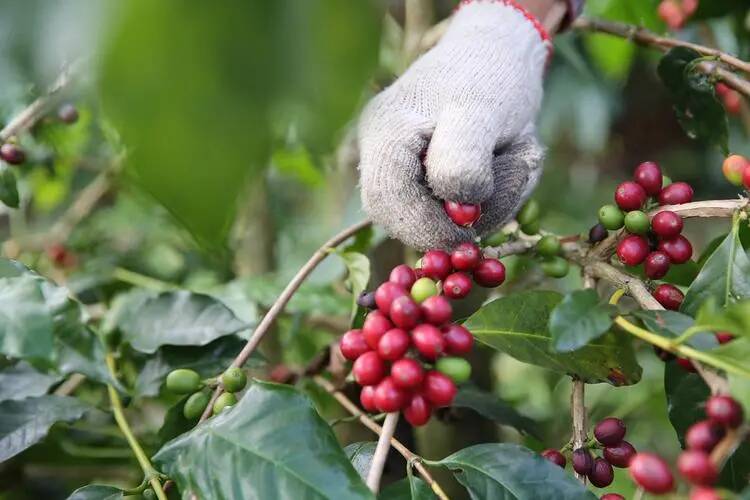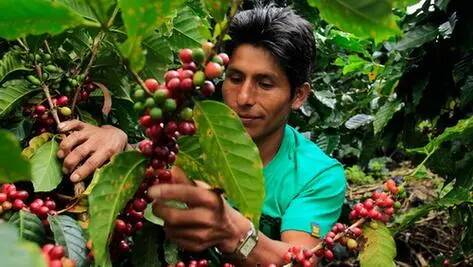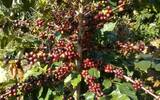Introduction of world coffee producing areas, Latin American coffee producing areas and rare coffee producing areas
Coffee is not suitable for growing in all parts of the world. Coffee trees are planted in the equatorial zone between the Tropic of Cancer, also known as the "coffee belt". According to the coffee belt, it can be divided into three major coffee producing areas: Latin American coffee producing area, Asia Pacific coffee producing area and African coffee producing area. Well, which coffee countries are there in these regions? let's first learn about the coffee producing areas in Latin America today.
Latin America refers to the American region south of the United States, including Mexico, Central America, the West Indies and South America in North America. The flavor of Latin American coffee beans is famous for its sense of balance and mellow thickness. The continent consists of 33 countries and some non-independent regions. Many of these countries are big coffee countries. The more common coffee producers are Brazil, Colombia, Costa Rica, Guatemala, Panama and so on. But there are also some relatively rare coffee producing countries, such as Cuba, Dominica, Venezuela, the United States-Hawaii and so on.
Cuban coffee was introduced from Hispaniola as early as 1748, and the coffee industry did not start until 1791 when French immigrants moved in. There were about 2000 coffee gardens on the island in 1827, and coffee became the main export. Coffee production peaked in the 1970s, producing about 30,000 tons of coffee. However, due to the disintegration of the Soviet Union, the potential Cuban coffee market was excluded by the United States trade embargo against Cuba. Today, Cuba's production is still quite low, producing about 6000-7000 tons of coffee a year. And many of the equipment are very old, road facilities are also relatively backward, so it is difficult to develop the coffee industry. The territory is mostly low-altitude plains, coffee is mainly grown in several mountains, coffee harvest time is from July to December, more cultivation of iron pickup, but also some bourbon, Kaddura, Kaduai and Katim.

Dominican coffee came to the Spanish-controlled island of Hispaniola, which is now Dominica, in 1735. At the end of the 18th century, coffee became the most important crop besides sugar. Coffee was exported in 1956, and in the 1960s, the production area began to be organized, and a processing plant was set up in 1967. However, the fluctuation of coffee price at the end of the 20th century led many farmers to switch to other crops. But since the 1970s, Dominica's domestic coffee consumption has increased, surpassing that of the UK, and foreign sales have fallen sharply, and only 20 per cent of coffee is now exported. There is no obvious seasonal difference in the climate of Dominica. Coffee can be produced almost all the year round, but the main production season is from November to May of the following year, mainly growing iron pickup and Kaddura.

Hawaiian coffee came to Hawaii in 1817, but the cultivation was unsuccessful. Then in 1825 a governor set sail from Europe and brought back coffee saplings from Brazil to grow successfully and spread all over the island. But then it was wiped out in 1858 by aphids and coffee wilt, and only the Kona producing area of the big island survived. Later, in the 1980s, when the sugar industry was underprofitable, coffee began to become an important cash crop, triggering a coffee boom in Hawaii. Kona has also become the most famous producing area in Hawaii, and other islands are also resuming coffee cultivation, harvesting from September to January of the following year, mostly with iron pickups and Kaduai.
Venezuelan coffee was introduced into Venezuela by a Jesuit monk in 1730. At that time, Venezuela was famous for growing tobacco and cocoa, and large coffee plantations began to appear in 1793. The first coffee boom was in 1830-1855, when Venezuela produced about 1/3 of the world's coffee. But in the 1920s, the Venezuelan economy became dependent on oil, and the coffee industry began to be privatized, and farmers could not grow coffee on public land. But coffee production and external sales were quite large until the 52nd president imposed strict restrictions on coffee production in 2003. As a result, only 19000 bags of coffee were exported between 2009 and 2010. And the sales price set by the government is much lower than the cost of production, hurting the coffee industry. It is currently in the process of recovery, with the harvest period from September to March, mainly growing tin cards, bourbon, Kaddura and New World.
Important Notice :
前街咖啡 FrontStreet Coffee has moved to new addredd:
FrontStreet Coffee Address: 315,Donghua East Road,GuangZhou
Tel:020 38364473
- Prev

Dropped it! Starbucks, your bag is broken again!
▲ Click to follow | in the daily boutique coffee culture magazine coffee workshop chain coffee brands, Starbucks has been practicing environmental protection, and the packaging materials are mostly made of biodegradable and environmentally friendly materials, such as biodegradable straws made from coffee grounds and environmentally friendly Kraft paper bags. Most netizens understand and support it.
- Next

Global coffee production up, Arabica prices down slightly, Robusta stays high
Recently, Reuters reported that Vietnam suffered from drought and coffee production will decrease. Brazil's forecast for next week's rainfall is positive, Arabica coffee production is on an upward trend and prices will fall. And Colombia's production picked up in 2023, ending three consecutive years of decline due to weaker rainfall. root
Related
- What effect does Italian American coffee with filter paper have? Will coffee taste better if it is put on filter paper at the bottom of the powder bowl?
- What is the color difference in coffee beans? What are the characteristics of honey processed coffee beans? Why are the anaerobically treated coffee beans uneven in color?
- How does novice Xiaobai quickly get started and make coffee? Newbies learn to make coffee by hand and share the specific steps and process process!
- Costa tea has a shelf life of 100 years?! Expert: Unable to verify
- It's a huge uproar! American milk addition was rejected by Manner employees?!
- Mocha pot coffee bean recommendations| How fine and how much powder should be used for grinding? What parameter ratios do I need to use to make milk with Mocha pot coffee?
- What are the characteristics of the world's top ten coffee beans treated with Costa Rica honey? How to make black honey kadura from Tarazhu Pilon Processing Plant taste good?
- How to make deep-roasted coffee? What grinding water temperature does authentic Jamaica Blue Mountain No. 1 coffee use to brew it well?
- Selected high-grade rose summer coffee flavor tasting guide Why Panama rose summer has the aroma of flowers and fruits
- What equipment does a novice Xiaobai need to buy to learn to make coffee? Filter cup electronic scale bean grinder manual flushing pot purchase guide

